| Srl | Item |
| 1 |
ID:
138700
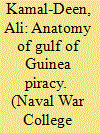

|
|
|
|
|
| Summary/Abstract |
As a global response to piracy off the coast of Somalia was taking place, alarm bells were ringing about a similar growing insecurity in the Gulf of Guinea. Today, the Gulf of Guinea stands as the most dangerous maritime area in terms of the success rate of attacks and violence. The United Nations Security Council adopted Resolutions 2018 (in 2011) and 2039 (in 2012) expressing grave concern about the mounting insecurity in the region and its consequences for regional and global security. A United Nations (UN) team was deployed to the region to assess the situation.
2
|
|
|
|
|
|
|
|
|
|
|
|
|
|
|
|
| 2 |
ID:
144482
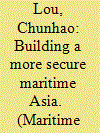

|
|
|
|
|
| Summary/Abstract |
In the past several years, maritime Asia has witnessed increasing security challenges, and this trend may persist in the near future. There are several underlying dynamics, including a geopolitical power game, lack of maritime governance and competition for maritime resources. However, in this globalised world, countries become quite interdependent and competition/confrontation is not the favourable policy choice. All countries share common interests in maintaining a stable maritime order, safeguarding the sea lines of communication (SLOCs) and developing a maritime economy. With China a rising maritime power, Chinese maritime policy has become important for Asia. Though incurring some misperception and misunderstanding, China will stick to its peaceful development strategy and try to foster a “harmonious ocean”, instead of resorting to the so-called “Neo-Mahanian Doctrine”. In achieving this, China will adopt an increasingly cooperative maritime policy, with the 21st-century Maritime Silk Road (MSR) initiative supplementing the effort.
|
|
|
|
|
|
|
|
|
|
|
|
|
|
|
|
| 3 |
ID:
119138


|
|
|
| 4 |
ID:
138024
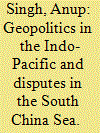

|
|
|
| 5 |
ID:
138091
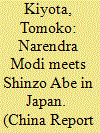

|
|
|
|
|
| Summary/Abstract |
2014 marked an important year for India–Japan relations. The most important events were the victory in the Indian general elections of Gujarat Chief Minister Narendra Modi of the Bharatiya Janata Party (BJP) and his visit to Japan. Japanese Prime Minister Shinzo Abe, who is widely known as a pro-India politician, had called up Modi soon after his victory and invited him to visit Japan. This invitation was warmly accepted by Modi and resulted in his visit to Tokyo and Kyoto from 30 August to 3 September. After the summit on 1 September, Modi and Abe announced the ‘Tokyo Declaration’ which declared ‘the dawn of a new era in Japan–India relations’ (MOFA, Japan 2014a).
|
|
|
|
|
|
|
|
|
|
|
|
|
|
|
|
| 6 |
ID:
140313
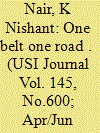

|
|
|
| 7 |
ID:
179026


|
|
|
|
|
| Summary/Abstract |
Discussion surrounding the announcement of a new NATO Maritime Command for the North Atlantic seems to have settled on the assumption that there is again a vital “sea-line of communication” (SLOC) between North America and Europe as there was supposed to be during the Cold War. The Soviet Union had a large fleet of nuclear and conventional submarines and it seemed very clear that Soviet admirals intended to fight a third “Battle of the Atlantic” in the event of war to prevent Western resupply of NATO. However, this scenario bore no resemblance to what the Soviet Navy actually intended to do in case of war. Changes in technology, notably in submarine propulsion, antisubmarine warfare (ASW), and ballistic missile range and accuracy were the real drivers of the Cold War in the Atlantic. Cruise missile-armed submarines that can attack shore-based economic infrastructure are the real threat from the Russian submarine force.
|
|
|
|
|
|
|
|
|
|
|
|
|
|
|
|